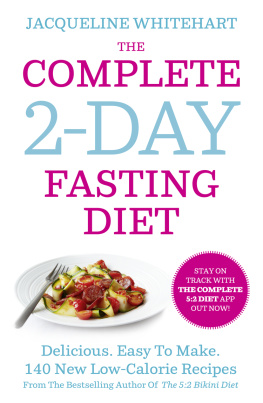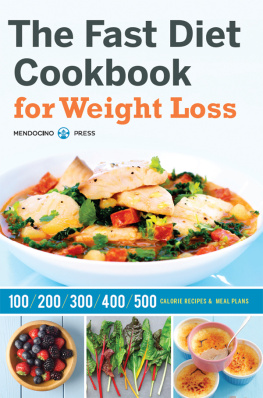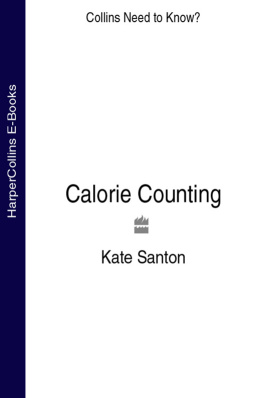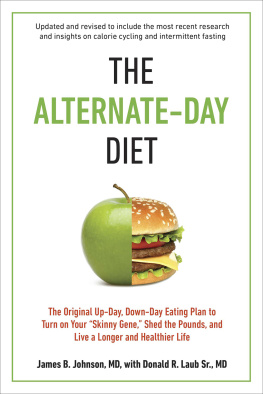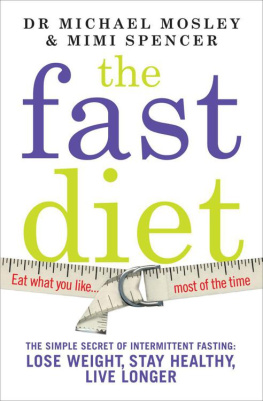We were in luck when we met Alison Hendrie, the extraordinarily talented writer who helped us create The CR Way . Her ability to quickly grasp CR science and transform our words into reader-friendly text was astounding. She also contributed text suggestions, organization, and was a great friend and manager for this project.
Working with Kathy Huck has been inspiring. Her amazing insights into whats important to the reader and how to organize the subject matter made a big difference.
Then there is Paul C. McGlothin, Pauls father, whose genius in biochemistry and pharmacology was the basis for Pauls training. His guidance, even to this day, helps us separate science fact from science fiction. Paul Cs influence is felt on every page. Pauls mother, Joyce, lent her support and took time to read the text and give suggestions. Merediths mother, Eva, who frequently gave us her support, saw the almost completed manuscript of The CR Way before leaving this world as the eldest member of the CR Society at ninety-five.
We were honored to have distinguished scientists review the text. How enriching to incorporate their comments into The CR Way .
Richard Lord, director of Science and Education of Metametrix Clinical Laboratory, used his powerful command of nutrition and biochemistry to review selected chapters and make suggestions.
Stephen Spindler, a world leader in CR research and our colleague in an upcoming genetic research project, was kind enough to review the CR science and make suggestions.
We are also tremendously thankful to be part of the great studies of human calorie restrictors by Luigi Fontana, John Holloszy, and their colleagues. The influence of these cutting-edge scientists is felt throughout The CR Way .
We also thank these talented associates whom we have the joy of working with regularly:
Jayne Jones, our dynamic office manager, who supported us with the things we needed to put The CR Way together page by page.
Pat Griffin, the brilliant cookbook connoisseur who used her experience and enthusiasm for cooking and cookbooks to analyze the recipes and improve their readability.
Matt Gross, our talented graphic artist who helped transform concepts into illustrations.
Elise Goyette and Harvey Light, who read sections of the book and came up with ideas to make it better.
Our doctors play such an important role in our CR life that we want to very sincerely acknowledge their contributions to The CR Way . Every one of them influences our approach to CR. In fact, the great internist, Dr. Abe Levy, himself a calorie restrictor, influenced Paul to start CR. We will be forever thankful for Dr. Levys guidance.
Steve Bock, M.D., of the Rhinebeck Health Center and the Center for Progressive Medicine, raised our level of health, especially by analyzing our immune and elimination systems and helping us set standards for both.
Alphonse Aversa, M.D., the internist who oversees Pauls overall health, is like a good coach who readies his team: He helps Paul evaluate all systems before participating in calorie restriction research testing.
Jeffrey Powell, M.D., our endocrinologist, oversees our bone health, helps us develop hormonal evaluations of CR, and provides wonderful enthusiastic support for many of our CR endeavors.
Marc Grossman, O.D., a fellow CR practitioner and renowned optometrist, provides innovative guidance on eye health.
Monica Peacocke, M.D., a CR practitioner and former researcher, provides guidance to Meredith on gynecological issues and encouragement on CR matters.
Jane Geders, M.D., Ph.D., provides expert evaluation and advice on all gastroenterological matters, helps us develop standards to better evaluate colonic health, and provides help and support on CR.
Alan Schliftman, M.D., a superb dermatologist who provides whole-system guidance and innovative approaches that help us realize the tremendous cosmetic benefits of following The CR Way .
Stephen Abel, D.M.D., a wonderful artisan and dentist, has raised our standard for aggressive prevention of dental problems. He helps us guard against gingivitis problems that can ultimately derail the good cardiovascular outcomes produced by CR.
Working with this terrific team of supporters and influencers to create The CR Way has been a wonderful experience. It deepened our knowledge of CR and made the long walks we take every evening even more fun as we planned the text. We hope it improves your health and happiness as it has ours.
PAUL and MEREDITH
Few things have captured the imagination of both the scientific community and the general population as the notion of extending life. Living longer, living healthier, living youthfullythese are widely desired goals. And today, they seem to be within our grasp.
Over the past several decades, calorie restriction (CR), a key to longevity, has stirred much excitement among researchers. It has been the focus of my research at the University of California, Riverside, for twenty years. Our lab has shown repeatedly that the rate of aging is strongly influenced by diet. The more calories an animal eats, the faster it ages. CR animals not only live longer, but they remain more active throughout life and remain free of cancer, diabetes, and heart disease for a much longer time.
After years of working with animals, CR science is now making strides in studying the effects of CR on humans. There are, of course, many differences between CR in humans and in animals, making the research link somewhat more challenging. In the lab, we subject animals to as few variables as possible. But people who want to benefit from CR do not live in such a controlled way. Our lives are complex. We are constantly subjected to influences that may affect our quality and length of life. Consider the many variables we sort through every daypositive and negative emotions, food selection, carcinogen exposureall of which may affect how long we live.
As is the case with any scientific breakthrough, more research needs to be done and the CR concept continues to develop in stages. It seems as if we learn more literally every day.
Paul McGlothin and Meredith Averill have been at the fore-front of CR for a long time. They were among the first to help organize and participate in the scientific exploration of CR in humans. In The CR Way McGlothin and Averill take the science of CR and craft a practical, easy-to-follow, and comprehensive action plan. The CR Way makes it possible for anyonefrom the neophyte to the serious longevistto follow their vision for a better and healthier life.
In addition to the potential health benefits of following The CR Way , my enthusiasm for this plan stems from the fact that everything the authors say is inspired either by their study of research results published in the CR science literature or by their own empirical testing. The CR Way lets you, the reader, take advantage of their experienceto practically apply the testing to your own life. This is invaluable information, and the authors are to be congratulated.
STEPHEN R. SPINDLER
University of California, Riverside


